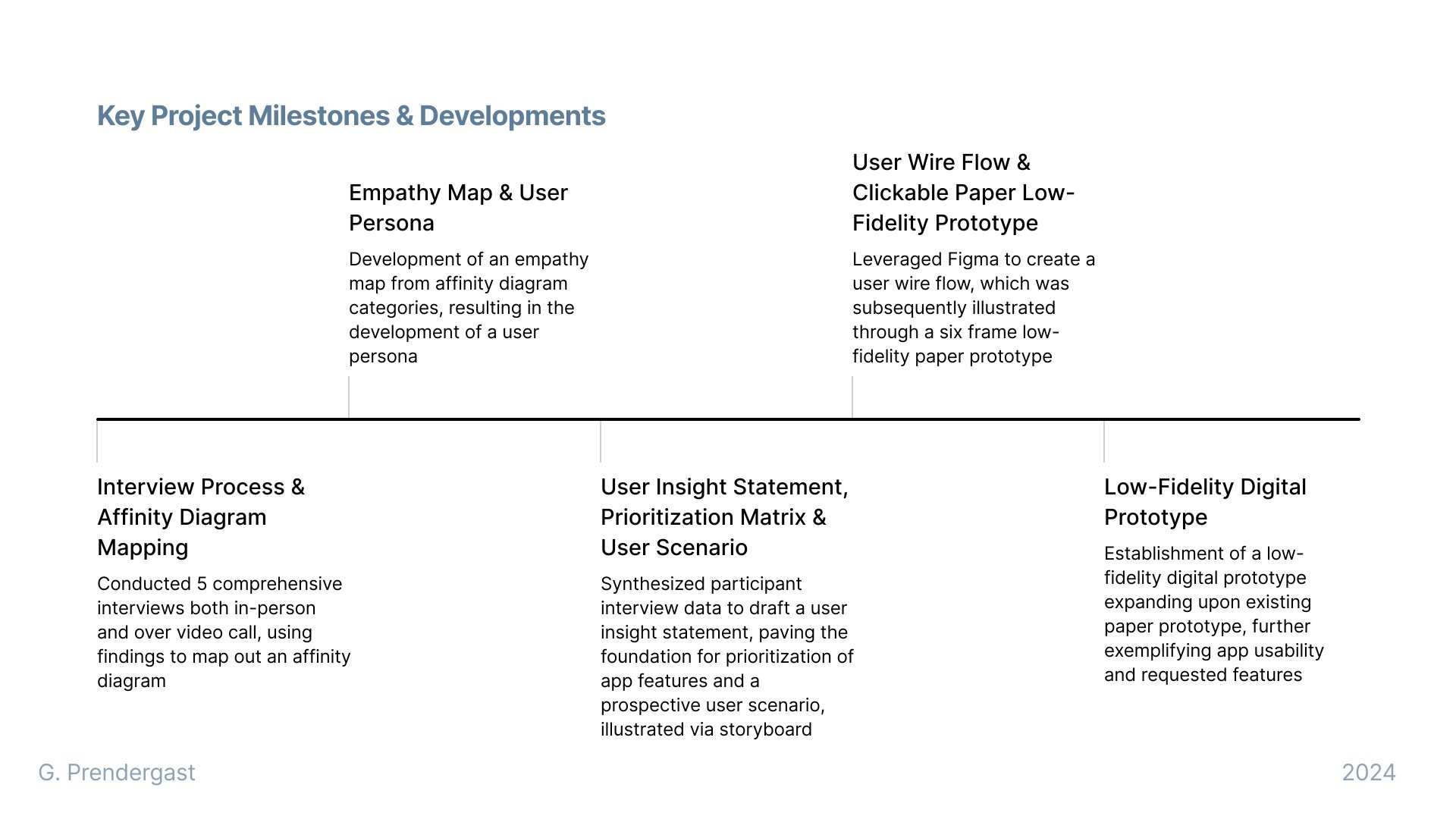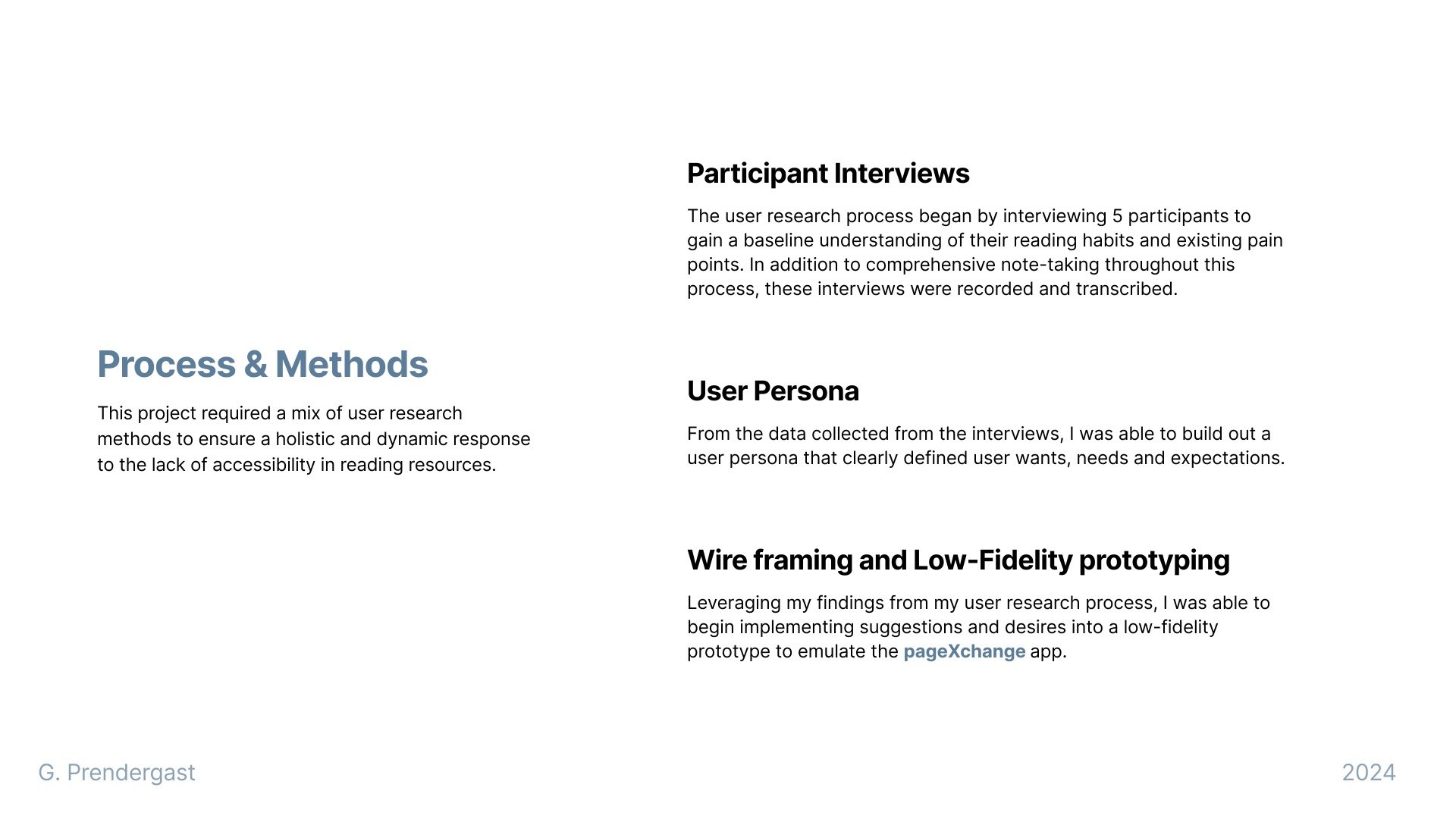Mobile App User Research, Ideation & Low-Fidelity Prototyping
Other Members: N/A
Timeline: 4 Weeks
My Roles & Responsibilities:
User Interview Guide Development*
In-Person & Video Call User Interview Process*
Affinity Diagram Mapping & User Persona Creation*
Concept & Design Ideation*
User Wire Flow
Usability Testing*
Low-Fidelity Digital Prototyping*
*Design process elements shown in this case study
Summary
The goal of this project was to conduct user research, ideation and low-fidelity prototyping for an app aimed at addressing an issue in the community. Leveraging foundational principles of user research such as user interviews and affinity diagram mapping, existing pain points among community members were identified, allowing for effective problem-solving to occur throughout the ideation process.





User Interviews
Over the course of one week, a total of five individuals participated in interviews regarding their current reading habits and existing frustrations within them.
Prior to conducting these interviews, an interview plan and question guide were created to ensure a cohesive and consistent interview process.
Affinity Diagram
I began the process of building my affinity diagram by laying out key themes cited in each of the 5 interviews I conducted, with each sticky color indicating one person’s response or thought.
I then grouped each response type into different broad categories.
Following broad categorization of interview responses, I broke the responses down further into both categories and subcategories.
The categories include:
Pain Points
Hobbies
Reading Material Source
Favorite Parts of the Reading Experience
Wishes & Wants
User Persona
Prioritization Matrix
To organize the ideas from my brainstorming session, I laid them out on a matrix of feasibility vs. priority.
To finalize my prioritization matrix process, I used the Must Have, Should Have, Could Have, Won’t Have categorization structure.
Initial Low-Fidelity Prototype
The Initial low-fidelity prototypes consisted of a six frame paper sketch that was added to Figma to allow for interactions, as well as a basic digital low-fidelity prototype that slightly expanded on the paper version. These prototypes set the foundation for the usability testing to come.
Usability Testing Plan & Feedback
Prior to usability testing, I drafted a usability testing plan to have clear, outlined goals and objectives throughout the process.
My objectives for the usability testing process were threefold:
To determine if the interface is easy for users to understand
To identify any existing pain points within the concept and prototype
To inquire about any additional features that would optimize user experience.
This document also served as a space to take notes based on user commentary and feedback, providing beneficial insights that aligned with my initial objectives.
From the usability testing process, the highest priority feedback I received from participants had to do with the functionality of the app, and limitations in my initial prototype that led to pain points in use.
Iterated Digital Low-Fidelity Prototype
From the user feedback collected during the usability testing stage, I was able to implement these requests in a second low-fidelity iterated prototype.








